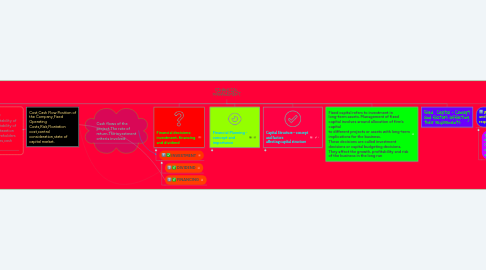FINANCIAL MANAGEMENT
Door vandana dalal


1. Concept, role and objectives of Financial Management
1.1. Financial Management is concerned with optimal procurement as well as the usage of finance
1.1.1. The size and the composition of fixed assets of the business
1.1.1.1. The quantum of current assets and its break-up into cash, inventory and receivables
1.1.1.1.1. The amount of long-term and short- term funds to be used
2. Amount of Earnings,stability of earnings,stability of dividends,taxation policy,shareholders preferences,cash flow
3. Cost,Cash Flow Position of the Company,Fixed Operating Costs,Risk,Floatation cost,control consideration,state of capital market.
4. Cash flows of the project,The rate of return,The investment criteria involved
5. Financial decisions: investment, financing and dividend
5.1. INVESTMENT
5.1.1. DIVIDEND
5.1.2. FINANCING
6. Financial Planning - concept and importance
6.1. OBJECTIVES
6.1.1. IMPORTANCE
7. Capital Structure – concept and factors affecting capital structure
7.1. mix between owners and borrowed funds.
7.1.1. Capital structure of a company, thus, affects both the profitability and the financial risk. A capital structure will be said to be optimal when the proportion of debt and equity is such that it results in an increase in the value of the equity share. In other words, all decisions relating to capital structure should emphasise on increasing the shareholders’ wealth.
